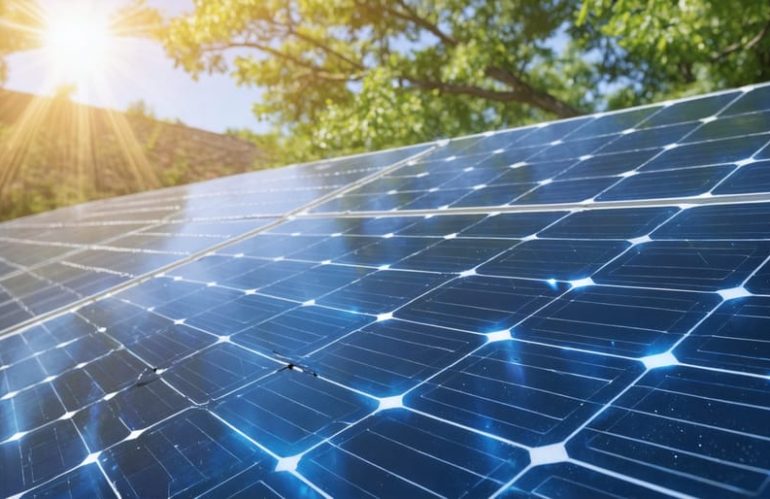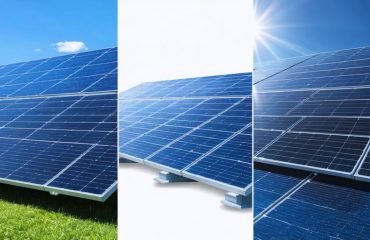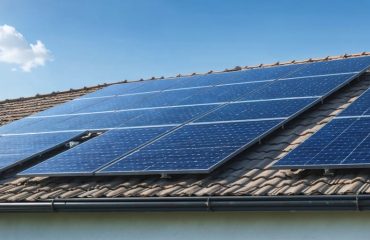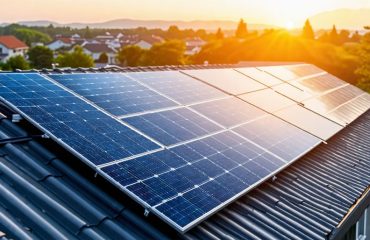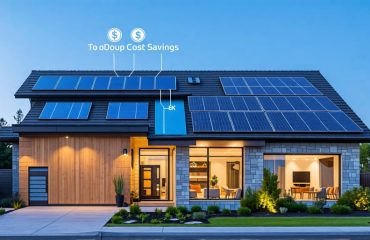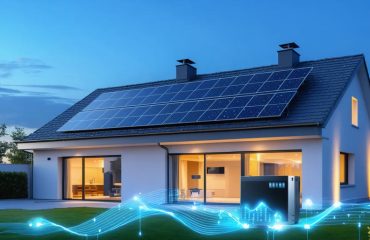Solar panel quality determines not just your energy savings, but the long-term reliability and performance of your home’s renewable energy system. As solar technology continues to evolve, understanding what separates premium panels from mediocre ones has become crucial for homeowners looking to make a smart investment. Today’s top-tier solar panels combine advanced photovoltaic cells, robust construction, and industry-leading efficiency ratings to deliver consistent power generation for 25+ years.
While price often indicates quality, savvy homeowners know to evaluate three key factors: efficiency ratings (how effectively the panel converts sunlight to electricity), degradation rates (how well it maintains performance over time), and manufacturing standards (including materials and testing protocols). The best panels typically offer efficiency ratings above 20%, annual degradation rates below 0.5%, and come backed by comprehensive warranties from financially stable manufacturers.
Quality solar panels aren’t just about technical specifications – they’re about peace of mind. When properly selected and installed, high-quality panels require minimal maintenance, withstand severe weather conditions, and consistently deliver on their promised energy production. This reliability translates directly into predictable energy savings and a faster return on your solar investment.
Key Quality Indicators in Solar Panels
Efficiency Ratings Explained
Solar panel efficiency ratings tell you how effectively a panel converts sunlight into electricity. Most residential solar panels range from 15% to 23% efficiency, with premium models reaching up to 25%. But what do these numbers mean for your home? A 20% efficient panel converts 20% of the sunlight it receives into usable electricity, while the rest is reflected or lost as heat.
While higher efficiency might seem better, it’s not the only factor to consider when looking for best value solar panels. A 15% efficient panel can still be an excellent choice if you have ample roof space. However, if your roof area is limited or partially shaded, higher efficiency panels help maximize power generation in a smaller footprint.
For perspective, a 400-watt panel with 20% efficiency typically produces enough electricity to power a refrigerator for a day. When comparing panels, remember that a 2-3% difference in efficiency rating usually translates to a relatively small real-world performance gap, so consider other factors like warranty, durability, and cost in your decision-making process.
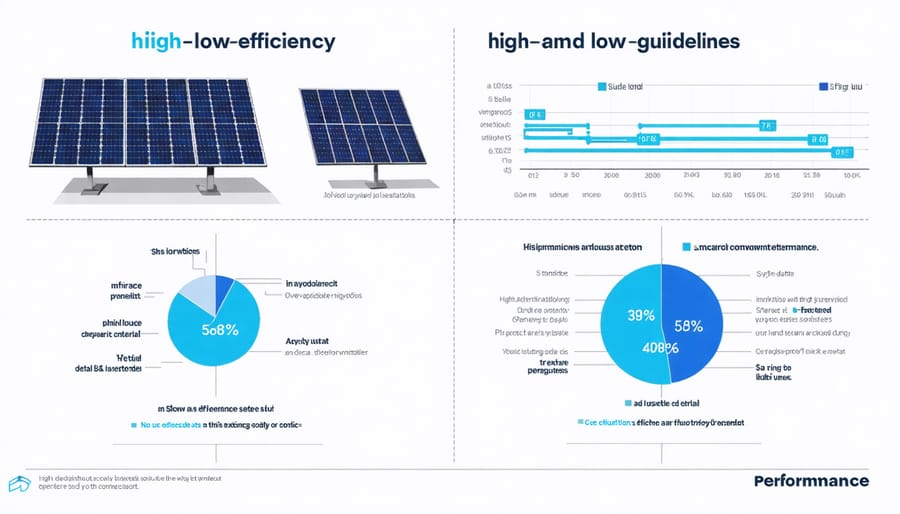
Temperature Performance
Contrary to what many might expect, solar panels actually perform better in cooler temperatures than in intense heat. When temperatures rise above 77°F (25°C), panel efficiency typically drops by 0.3-0.5% for each degree increase. This means a panel rated at 20% efficiency might operate at 18% efficiency on a hot summer day.
But don’t let this discourage you! Quality solar panels are designed with temperature performance in mind. Look for panels with a lower temperature coefficient – this number tells you how much efficiency your panel loses in heat. The best panels on the market have temperature coefficients around -0.3%, while standard panels are closer to -0.5%.
Modern panels also include features like enhanced ventilation and advanced materials that help maintain performance in high temperatures. By choosing panels with good temperature ratings and ensuring proper installation with adequate airflow, you can minimize efficiency losses and maximize your energy production year-round.
Durability and Warranties
High-quality solar panels are built to withstand decades of exposure to the elements, making durability a crucial factor in their overall value. Leading manufacturers use premium materials like tempered glass, robust aluminum frames, and high-grade silicon cells to ensure long-lasting performance. These panels undergo rigorous testing for heat resistance, wind loads, and impact protection.
Most reputable solar manufacturers offer two types of warranties: a product warranty covering manufacturing defects (typically 10-15 years) and a performance warranty guaranteeing minimum power output (usually 25-30 years). The performance warranty typically ensures that panels will maintain at least 80% of their original output capacity after 25 years.
When evaluating solar panel quality, pay special attention to warranty terms and the manufacturer’s track record. A comprehensive warranty from an established company provides peace of mind and protects your investment. Look for warranties that cover not just the panels but also labor costs for potential replacements or repairs.
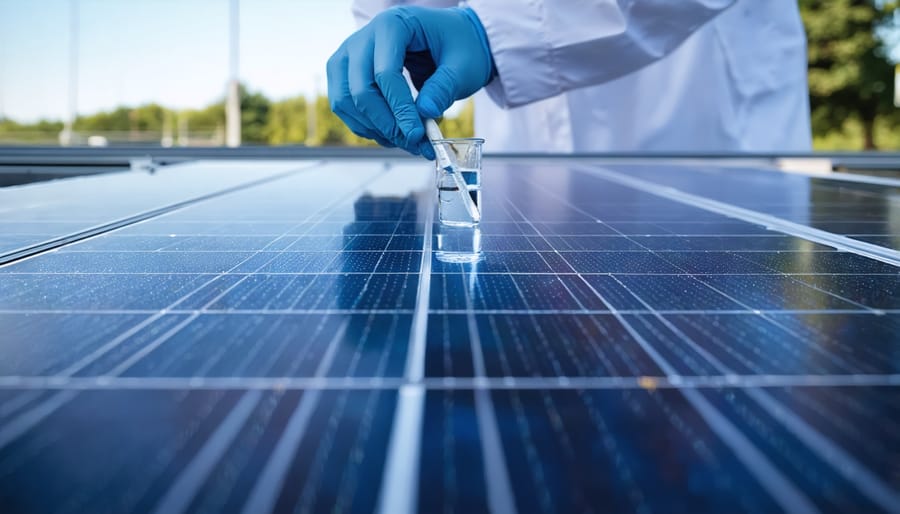
Top Manufacturing Standards and Certifications
When shopping for solar panels, several key certifications serve as reliable indicators of quality and performance. The most important certification to look for is the IEC 61215, which ensures panels can withstand various environmental conditions and maintain their performance over time. This certification involves rigorous testing for humidity, temperature variations, and mechanical stress.
In the United States, the UL 1703 certification is crucial, as it confirms that panels meet strict safety standards and are suitable for residential installation. Additionally, panels with the UL 61730 certification have undergone comprehensive testing for electrical and fire safety, giving you extra peace of mind about your installation.
For performance assurance, look for panels tested by the Clean Energy Council (CEC). CEC-approved panels meet strict efficiency and reliability standards, making them eligible for government incentives in many regions. Another valuable certification is the Salt Mist Corrosion Testing (IEC 61701), particularly important if you live in coastal areas where salt air can affect panel durability.
Many quality manufacturers also seek ISO 9001 certification, which indicates they follow stringent quality management practices in their manufacturing processes. This certification helps ensure consistent product quality across production batches.
The PV Cycle certification is becoming increasingly important, as it indicates the manufacturer’s commitment to responsible end-of-life recycling of their panels. This certification demonstrates environmental responsibility beyond just clean energy production.
Remember that while these certifications are important, they’re just part of the quality equation. Look for manufacturers who exceed minimum certification requirements and offer strong warranties to back up their products. The best panels often carry multiple certifications, showing the manufacturer’s commitment to quality across various aspects of production and performance.
When comparing panels, ask your installer to explain which certifications their recommended panels carry and why they’re relevant to your specific installation needs. This knowledge will help you make an informed decision about your solar investment.
Real-World Performance Factors
Weather Resistance
Quality solar panels are engineered to withstand various weather conditions while maintaining optimal performance. Most modern panels undergo rigorous testing to ensure they can handle extreme temperatures, heavy rain, snow loads, and high winds. They’re typically designed to operate efficiently in temperatures ranging from -40°F to 185°F, though peak performance occurs between 59°F and 95°F.
High-quality panels feature tempered glass that can withstand hailstorms with impacts up to one inch in diameter traveling at 50 miles per hour. They’re also built with robust aluminum frames and sealed junction boxes to prevent water damage. To protect panels from wildlife damage and other environmental factors, manufacturers often include protective barriers and specialized coatings.
Snow and ice typically slide off panels due to their smooth surface and tilted installation, though some maintenance may be required during heavy snowfall. Most quality panels are rated to handle snow loads of up to 5,400 Pascal (Pa), equivalent to several feet of snow accumulation.
Salt spray resistance is particularly important for coastal installations, and premium panels undergo specialized testing to ensure they can withstand corrosive environments. Many manufacturers also offer enhanced UV protection to prevent degradation from prolonged sun exposure, helping maintain panel efficiency over their 25+ year lifespan.
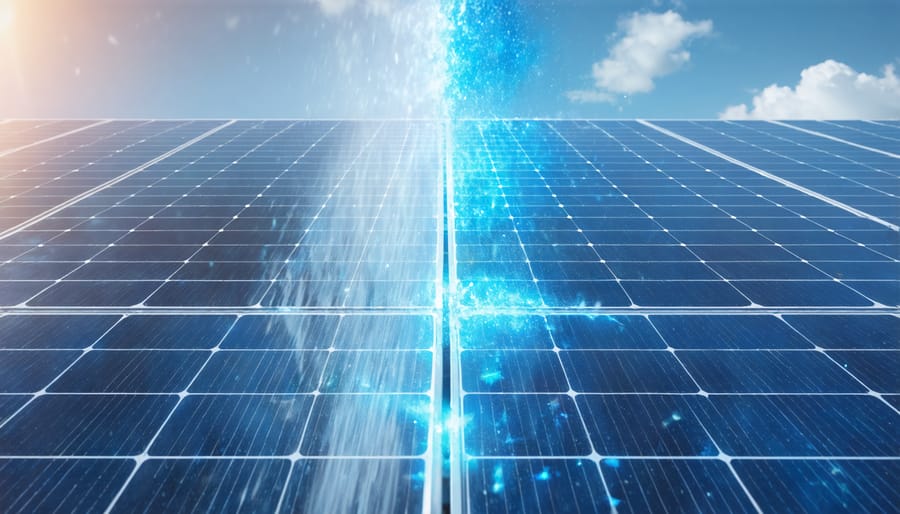
Long-Term Output Stability
Quality solar panels are designed to maintain their performance over decades, with most manufacturers guaranteeing at least 80% of their original output capacity after 25 years. This long-term stability is achieved through robust manufacturing processes and high-grade materials that resist degradation from environmental factors.
The best panels typically experience a minimal annual degradation rate of just 0.5% to 0.7%, meaning they’ll still produce plenty of clean energy well into the future. This steady performance is backed by features like anti-reflective glass coatings, weather-resistant seals, and durable frame construction that protect the solar cells from moisture, temperature fluctuations, and physical stress.
Modern quality panels also include built-in safeguards against common issues that could affect long-term output. These include bypass diodes that prevent hot spots, reinforced backing sheets that seal out moisture, and robust connection points that maintain electrical efficiency over time.
To ensure your panels maintain their optimal performance, manufacturers incorporate UV-resistant materials and rigorous testing protocols. Many quality panels undergo extreme weather testing, including exposure to high winds, heavy snow loads, and intense heat cycles. This thorough testing helps guarantee that your investment will continue delivering reliable solar power for decades to come, making them a sound choice for sustainable home energy production.
Making the Right Choice for Your Home
Budget vs. Quality Balance
When considering solar panels for your home, finding the right balance between budget and quality is crucial. While solar panel investment costs can vary significantly, it’s important to understand that the cheapest option isn’t always the most economical in the long run.
Premium solar panels typically offer higher efficiency ratings, better durability, and longer warranties, which can justify their higher upfront costs. These panels often convert more sunlight into electricity, requiring fewer panels to meet your energy needs and potentially saving roof space. They also tend to maintain their performance better over time, resulting in more consistent energy production throughout their lifespan.
However, mid-range panels can offer excellent value for many homeowners. These panels often provide a sweet spot between cost and performance, featuring good efficiency ratings and reliable warranties at more moderate prices. They may not have the cutting-edge technology of premium panels, but they can still deliver dependable performance for 25 years or more.
When evaluating your options, consider these key factors:
– Total energy needs and available roof space
– Local climate conditions
– Warranty terms and manufacturer reputation
– Long-term savings potential
– Installation quality and costs
Remember that the most expensive panels aren’t necessarily the best choice for every situation. The ideal solution often depends on your specific circumstances, including your energy consumption patterns, local weather conditions, and available solar incentives in your area.
Climate-Specific Considerations
When selecting solar panels for your home, your local climate plays a crucial role in determining the best choice for optimal performance. Different weather conditions can significantly impact solar panel efficiency and longevity, making climate-specific considerations essential for your investment.
In hot climates, look for panels with excellent temperature coefficiency ratings, as panel efficiency typically decreases when temperatures rise above 77°F (25°C). Premium panels often include advanced thermal management features that help maintain performance even during intense heat waves.
For areas with heavy snowfall, consider panels with robust frames and reinforced glass that can withstand substantial snow loads. Many quality panels are tested to handle up to 5,400 pascals of pressure, ensuring they’ll stand up to winter conditions. Additionally, panels with anti-reflective coatings can help capture more light during shorter winter days.
Coastal regions present unique challenges due to salt spray and humidity. In these areas, panels with superior encapsulation materials and corrosion-resistant frames are essential. Look for panels that have passed salt mist corrosion testing and feature specialized protective coatings.
For regions prone to severe weather, such as hail or high winds, seek out panels that have undergone rigorous impact resistance testing. Many top manufacturers now offer panels certified to withstand hailstones up to one inch in diameter and wind speeds exceeding 140 mph.
Remember that warranty terms often vary based on installation location, so always verify coverage for your specific climate conditions. Working with a local installer familiar with regional weather patterns can help ensure you select panels best suited for your area’s unique challenges.
Understanding solar panel quality is crucial for making a smart investment in your home’s energy future. Throughout this guide, we’ve explored the key factors that determine panel quality, from efficiency ratings and durability to manufacturer reputation and certification standards. Remember that while premium panels may cost more initially, they often provide better long-term value through higher energy production, increased reliability, and longer warranty coverage.
When evaluating solar panels for your home, focus on finding the right balance between quality and cost that meets your specific needs. Consider factors like your local climate, available roof space, energy requirements, and budget. Don’t be swayed solely by price – the cheapest option isn’t always the most cost-effective in the long run.
Look for panels with strong warranty protection, high-quality materials, and certification from recognized testing organizations. Work with reputable installers who can provide detailed information about the panels they recommend and explain why they’re suitable for your situation.
By taking the time to research and understand solar panel quality, you’re better equipped to make an informed decision that will benefit both your wallet and the environment for years to come. Remember that solar technology is a long-term investment in your home’s future, and choosing quality panels today will ensure optimal performance and reliability throughout their lifetime.

